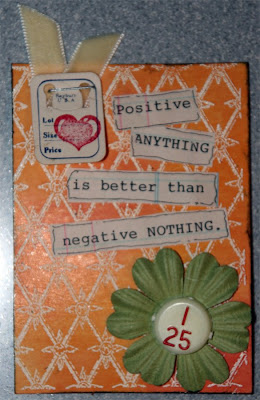Paint Rags as Art -- the color of GREEN

I wish that I could give you a huge list of things that I am currently doing that would be considered "green." But, in reality, I am taking baby steps. A layout that you will see later this week was inspired by a moment of exasperation when yet ANOTHER yellow pages book showed up on my doorstep. It feels like these HUGE books get outdated faster than they can be printed -- and with competitive books -- it just means that the number you are likely to get is doubled. I hate the idea of throwing out pages and pages of paper into a landfill...so I looked at the book a little and decided there were at least TWO uses I could repurpose it for. The first was as a leaf/flower press. I am going to try and do some mono prints with natural materials...and having them FLAT is a key part of that....so now that book is my official press. I took a few minutes and added some wax paper between several spaced out pages...and it is ready and waiting for spring and my mono-printing project. The f...









